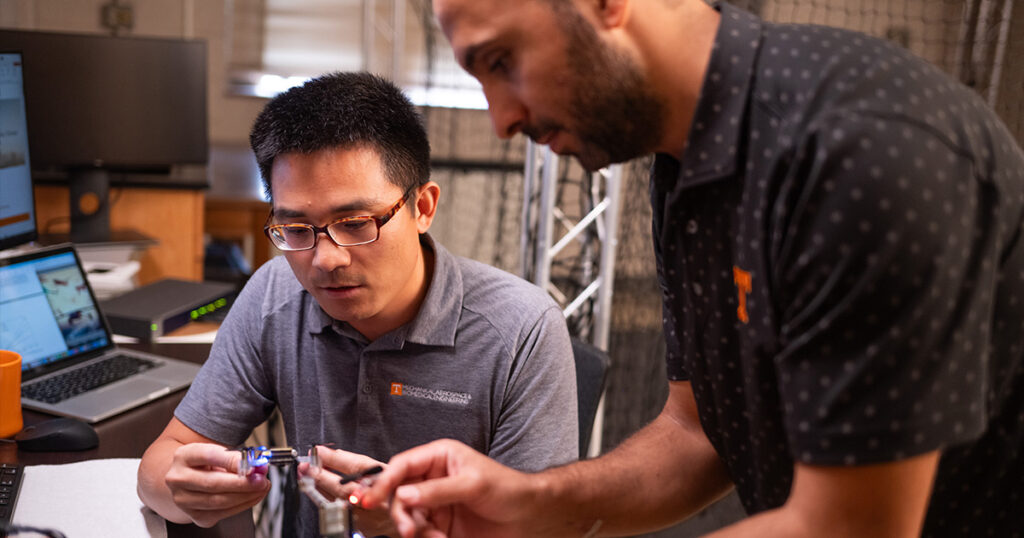Air taxis that can soar over traffic snarls. Small aircraft that allow businesspeople to commute from building top to building top within a city or in nearby cities. Drones that speed package delivery and provide medical and disaster response.
Through its Advanced Air Mobility (AAM) Mission, NASA is spearheading research that could turn these and other futuristic air transportation dreams into reality. And UT is onboard.
Assistant Professor Zhenbo Wang, who runs the Autonomous Systems Laboratory in the Tickle College of Engineering’s Department of Mechanical, Aerospace, and Biomedical Engineering, recently received an NSF Faculty Early Career Development (CAREER) Program award that will provide $537,847 over five years for research toward developing and testing a novel airway system, operational rules, and control schemes for autonomous aircraft of the future.
Wang said that most of today’s aircraft depend on ground control to help direct their operation. “Autonomous” aircraft would require little or no ground control. Eventually some of those aircraft, especially those flying cargo, could be completely computer-flown, without pilots.
Small passenger aircraft, perhaps with only five to nine seats, could fly at lower altitudes than large passenger jets. They could provide quick commutes within cities (less than 20 miles), between cities and nearby rural areas (20 to 50 miles), or between metropolitan areas that are relatively close (50 to 300 miles). Similar small planes, and also drones, could be used to transport cargo.
Wang’s CAREER project has three objectives: investigate the best physical and digital infrastructures needed for autonomous air mobility systems; develop flight control and management techniques to better coordinate autonomous vehicles when they are flying; and conduct simulated and emulated experiments to make sure these systems work.
Developing the physical infrastructure involves establishing different altitudes of air traffic corridors that aircraft use to fly from point A to point B. Such aircraft could be capable of near vertical take-offs and landings, so “vertiports” (vertical airports) might be located on building rooftops or in building garages.
Wang’s group also will help develop the “brains” of the flight computers that navigate the aircraft by collecting and optimizing data gleaned from sensors in the aircraft and the environment. They will devise algorithms to facilitate autonomous control, real-time optimization, and optimal decision-making. They will do computer simulations to make sure the algorithms work, and use drones in the lab’s new 1,000-square-foot netted area to see how the systems work in real life.
“These contributions are significant because they are a fundamental step toward reimagining transportation systems by uncovering how high-tempo, high-density air mobility operations can be safely and efficiently coordinated in limited airspace,” Wang said, adding that autonomous air mobility advances will impact multiple fields including transportation, aerospace, smart cities, and civil engineering.
How soon might autonomous air mobility systems be operational?
“Different people have different opinions,” Wang said, adding that some vehicles may be operating in five to 10 years as research continues. He believes a more complex autonomous air mobility system is 20 to 30 years away.
Like all CAREER awards, Wang’s project includes components that support undergraduate or pre-college education and public education about the work.
